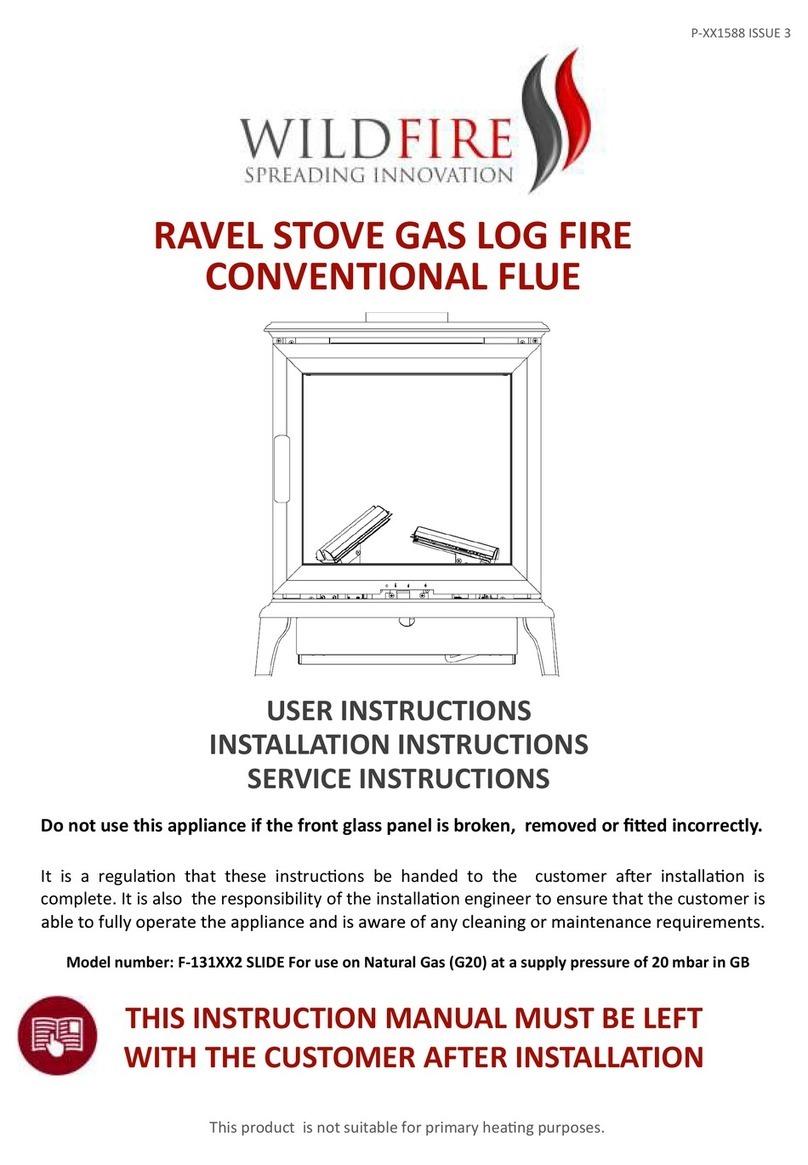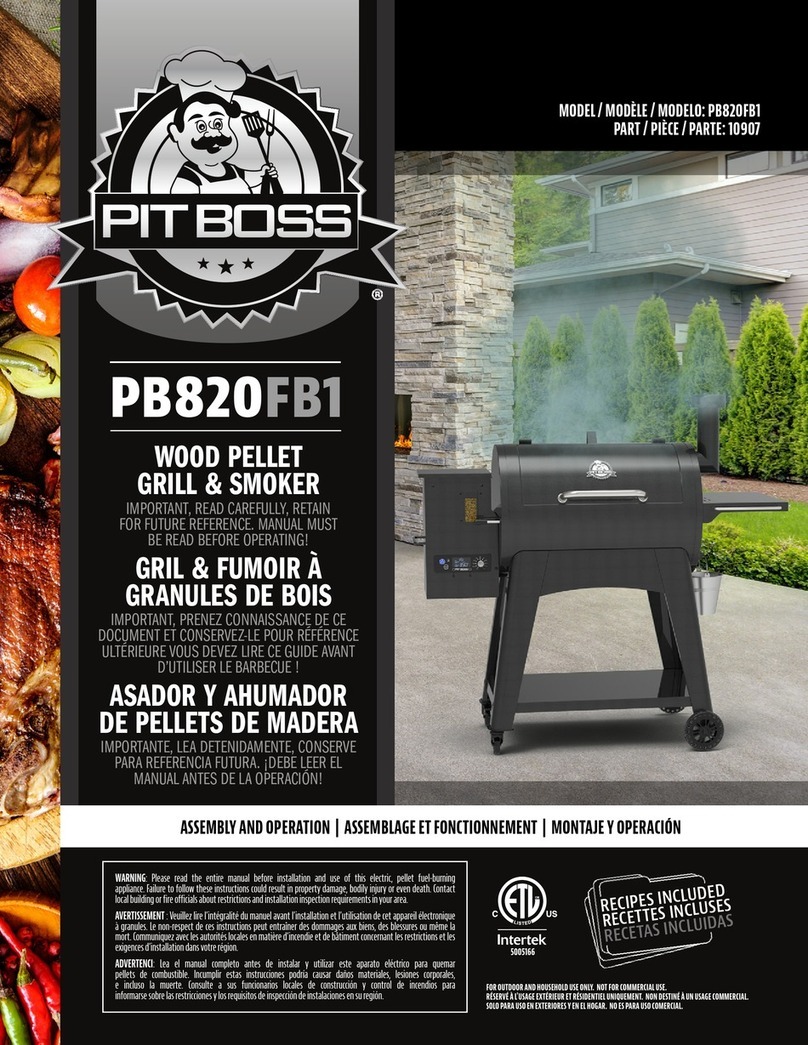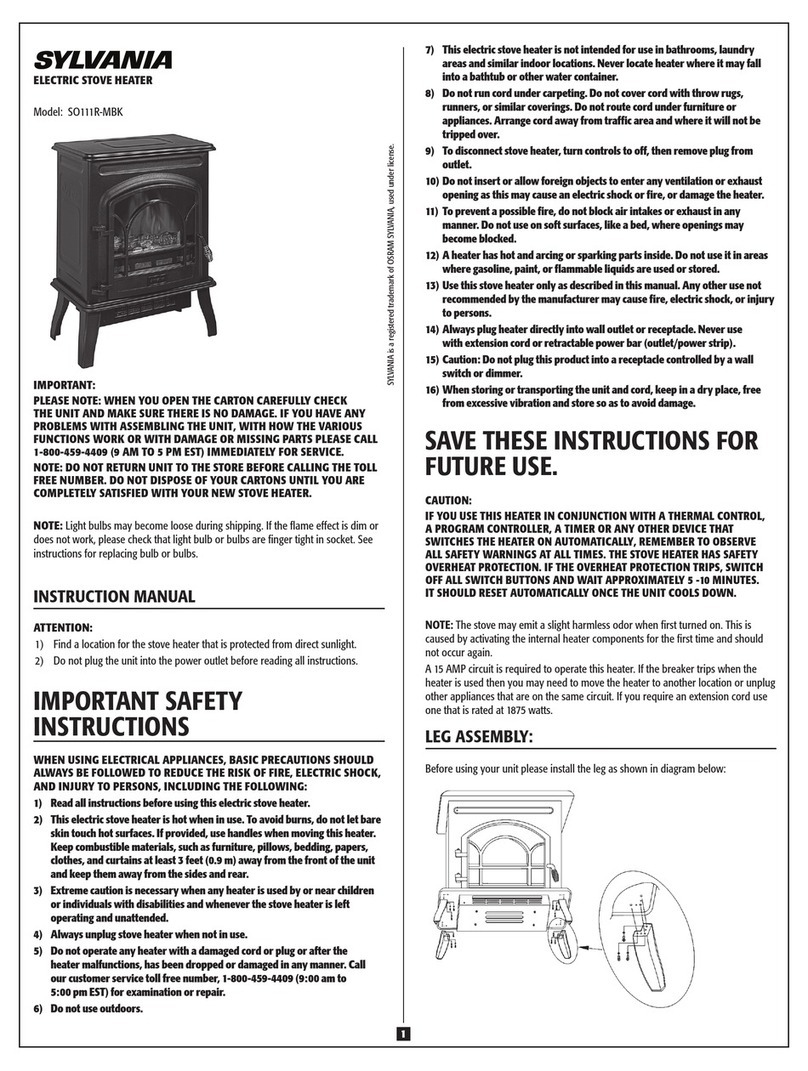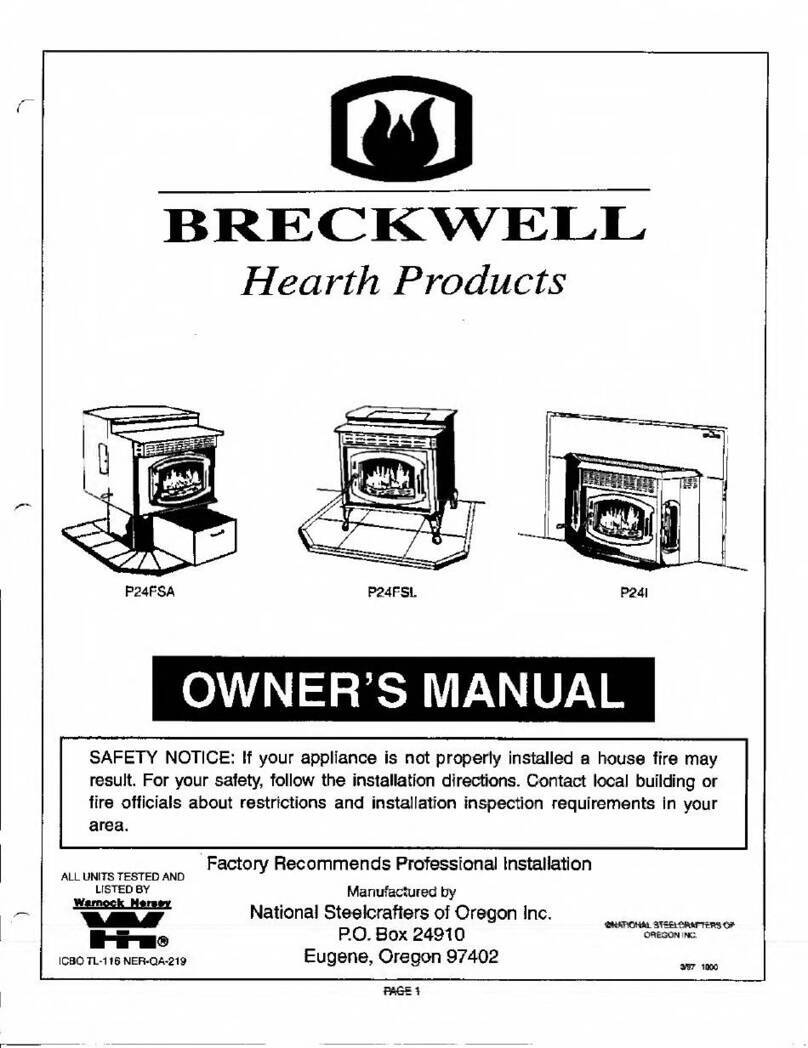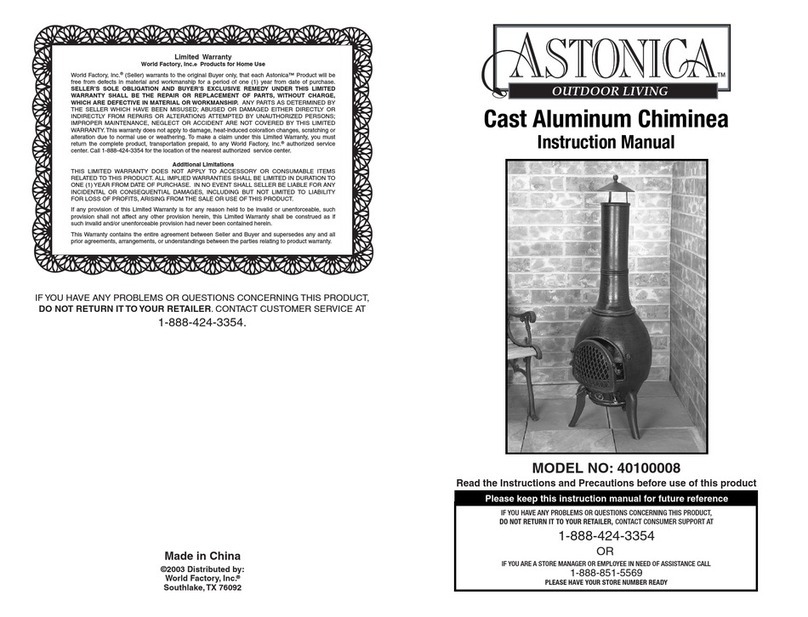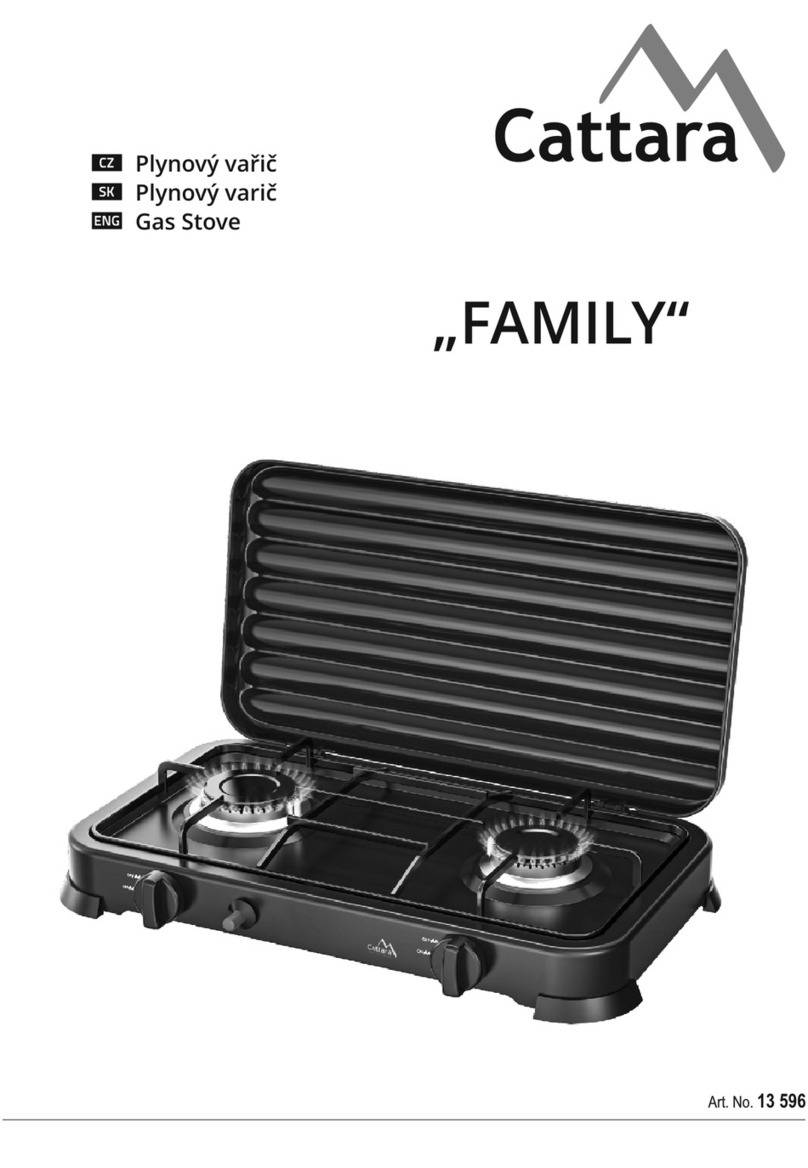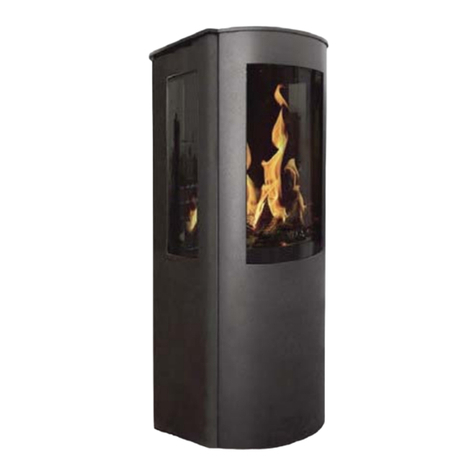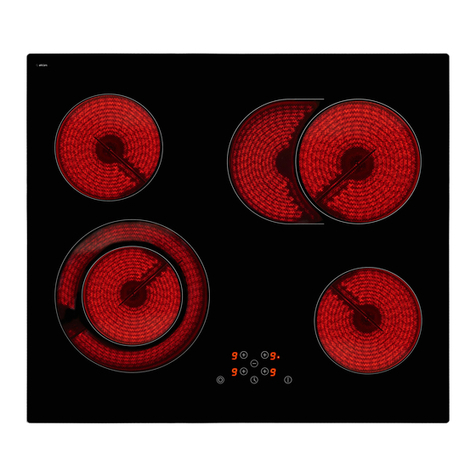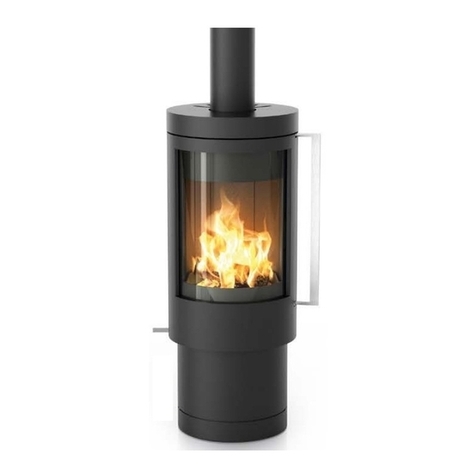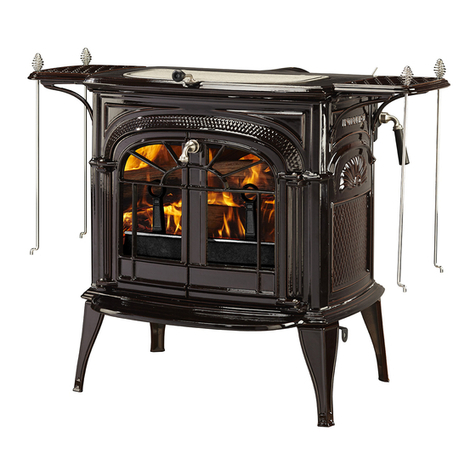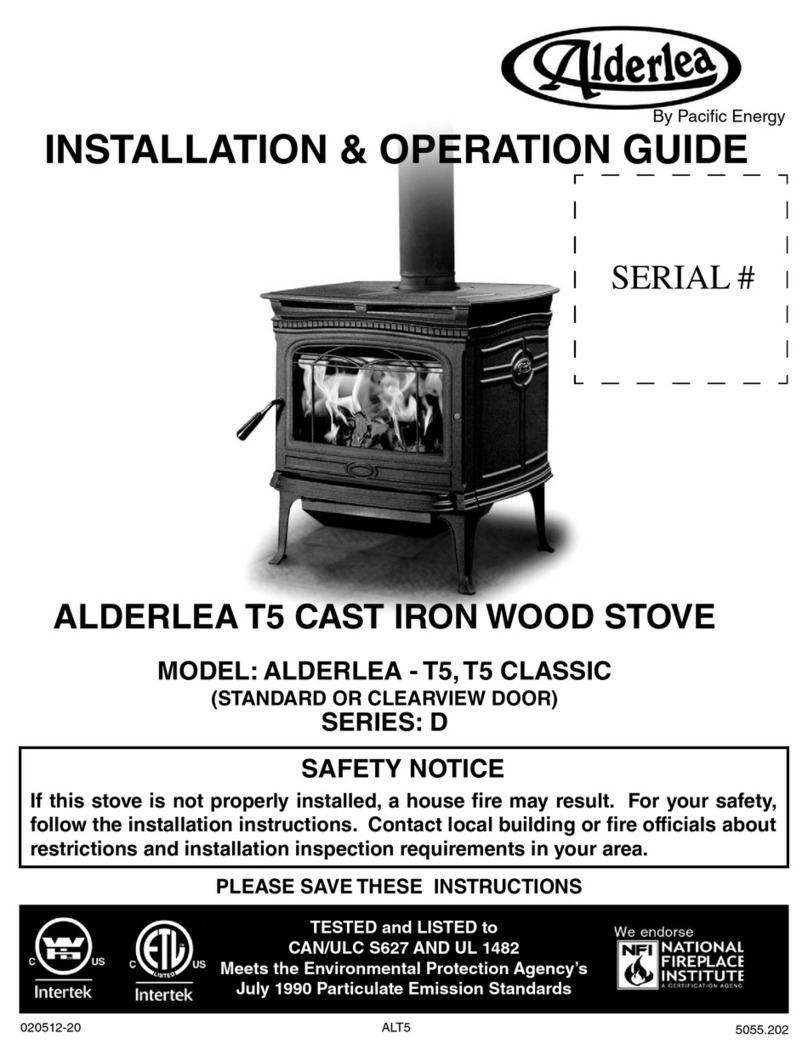
3
260814-24 ALT5
©PACIFIC ENERGY FIREPLACE
PRODUCTS LTD.
Safety and Maintenance
1. Burn only dry, well seasoned wood. The denser or heavier the wood when dry, the
greater its heat value.This is why hardwoods are generally preferred. Green or wet wood
should not be used, as it will reduce heat output, as well as contributing signicantly to
creosote buildup.
2. Remove ashes frequently and only when the stove is cold. Too much ash could cause
embers to roll out the door when it is opened. This may pose a re hazard. For proper
operation, maintain a 1" minimum ash base.
3. If glass becomes darkened from slow burning or poor wood, it can readily be cleaned with
replace glass cleaner when stove is cold. Never scrape with an object or use abrasive
cleaners that might scratch the glass. The type and amount of deposit on the glass is
a good indication of the ue pipe and chimney buildup. A light brown dusty deposit that
is easily wiped off usually indicates good combustion and dry, well-seasoned wood,
therefore relatively clean pipes and chimney. On the other hand, a black greasy deposit
that is difficult to remove is a result of wet and green wood and too slow a burning rate.
This will also create heavy deposit buildup in the chimney.
4. DOOR GASKETS - The gasket used by Pacic Energy (5/16" medium density berglass
rope) requires only light pressure to seal. This will prolong seal life. It is important that
the door seal be maintained in good condition. Periodically inspect seals and replace
if necessary. Follow instructions included in the door gasket kit obtainable from your
nearest Pacic Energy dealer.
5. DOOR GLASS - Do not slam loading door or otherwise impact glass. When closing door,
make sure that no logs protrude to impact the glass. If the glass gets cracked or broken,
it must be replaced before using the stove. Replacement glass can be obtained from
your dealer. Use ceramic glass only. Do not substitute with any other type.
GLASS SIZE – 17.25” x 11.375” x 5mm
To remove broken glass, undo the four retaining screws and remove clamps, noting position
for re-assembly. Remove all particles of glass. Be careful as they are very sharp. Install new
glass complete with gasket. Replace clamps and screws.
6. Do not store wood within heater installation clearances, or within the space required for
fuel loading and ash removal. Keep the area around the heater clean and free of loose
combustibles, furniture, newspapers, etc.
7. If the heater requires cleaning, use mild soap and water only. Use of abrasive cleaners
will void warranty.
8. Establish a routine for fuelling and ring the heater. Check daily for creosote buildup until
experience shows how often you need to clean the chimney to be safe.
9. Be aware that the hotter the re, the less creosote is deposited. Weekly cleaning may
be necessary in mild weather, even though monthly cleaning is usually enough in the
coldest months when burning rates are higher.
10. Instruct all members of your family on the safe operation of the heater. Ensure they
have enough knowledge of the entire system if they are expected to operate it. Study
the section on chimney res and the importance of following the steps outlined "In Case
of Chimney Fire".
WARNING:
Never use chemicals or any other volatile
liquid to start a re. Do not burn garbage,
or ammable uids such as gasoline,
naptha, or engine oil. We strongly
recommend that smoke detectors be
installed.
CAUTION:
• tighten screws very carefully, do not over-
tighten
• do not clean glass when hot
• do not use abrasive cleaners on glass
WARNING:
Only use materials supplied by
manufacturer when doing maintenence
or replacements.
NATIONAL
FIREPLACE
INSTITUTE
CERTIFIED
We recommend that
our woodburning hearth
products be installed and
serviced by professionals
who are certied in the
U.S. by the National
Fireplace Institute®(NFI)
as NFI woodburning
Specialists or who are
certied in Canada by
Wood Energy Technical
Training (WETT).
Wood Energy
Technical Training

